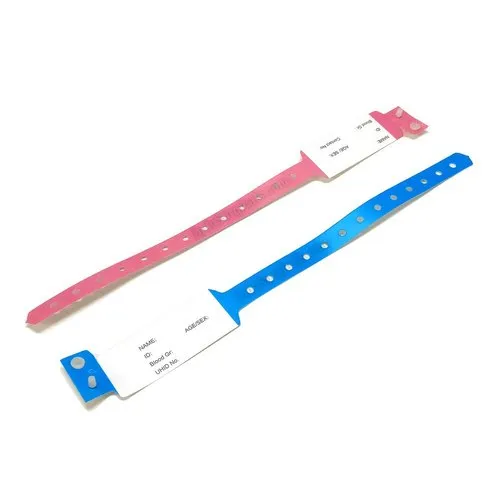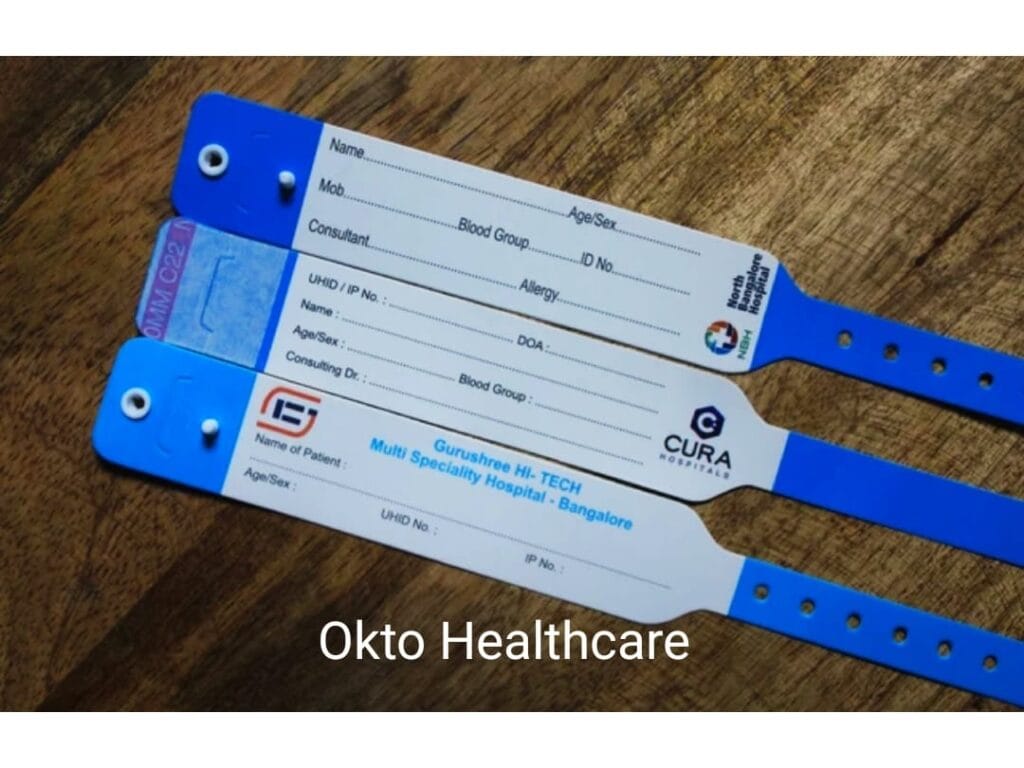Enhancing Safety And Security: The Relevance of Person Identification Bands in Healthcare
In the world of medical care, the effectiveness of client recognition bands can not be overstated, as they serve as an essential safeguard versus misidentification and succeeding errors. As we discover the diverse role of these bands, it comes to be noticeable that their importance expands beyond plain recognition, elevating concerns regarding ideal practices and future developments in patient safety.
Summary of Person Recognition Bands
Client identification bands play a crucial duty in making certain the security and precision of client care in health care settings. These bands, typically endured the wrist or ankle joint, act as a critical device for verifying person identification, thereby decreasing the threat of mistakes in therapy, drug administration, and various other healthcare procedures. Made from sturdy materials, patient identification bands commonly include important info such as the individual's name, day of birth, clinical record number, and barcodes or QR codes for scanning.
The application of individual recognition bands is vital in different healthcare settings, including health centers, outpatient centers, and long-lasting care organizations. They add to a systematic method in patient administration, allowing healthcare specialists to swiftly and properly identify patients, specifically in high-pressure scenarios where swift decision-making is vital.
In addition, making use of these bands is aligned with governing requirements intended at improving patient safety and security - Patient Identification Band. By guaranteeing that each patient's info is conveniently available and easily proven, doctor can preserve a high requirement of care, reduce the incidence of negative occasions, and cultivate a society of safety and security within healthcare institutions
Benefits of Accurate Recognition
Exact recognition is basic to boosting person safety and security and care top quality in medical care setups. It works as the very first line of protection against errors that could lead to adverse patient end results. By making certain that each person is appropriately determined with trustworthy ways, such as client identification bands, medical care service providers can considerably reduce the risk of misidentification, which can lead to unacceptable therapies, medication mistakes, and also surgical mix-ups.
Furthermore, accurate patient recognition assists in efficient communication amongst healthcare groups. When all team participants can continually determine patients, they can share critical info a lot more efficiently, leading to far better sychronisation of treatment. This is especially essential in emergency situation situations where timely interventions are crucial.
Additionally, accurate recognition supports compliance with regulatory criteria, thus lowering the danger of lawful repercussions for health care centers. It promotes trust fund in between clients and doctor, as patients feel a lot more safe and secure knowing that their identifications are being safeguarded.

Common Obstacles Encountered
Making sure effective person identification in medical care settings presents a variety of difficulties that can compromise safety and security and care quality. Individuals might arrive in a state of complication or distress, making precise recognition challenging.
An additional challenge is the reliance on human consider identification treatments. Healthcare experts might accidentally misinterpret or neglect recognition protocols, especially in high-stress original site settings such as emergency situation departments. This can cause mistakes, including the administration of inaccurate therapies or drugs.
Technological problems additionally position challenges. Electronic health and wellness record (EHR) systems are created to enhance person recognition, system outages or individual mistakes can interrupt the procedure. The physical layout of client ID bands can lead to readability concerns, especially in cases where bands are damaged or obscured.
Lastly, irregular training amongst team regarding recognition methods can cause gaps in knowledge and practice. Attending to these obstacles is critical for boosting person safety and security and guaranteeing that identification bands serve their desired objective successfully.
Ideal Practices for Execution
To efficiently execute patient recognition bands in health care settings, organizations have to embrace a complex technique that prioritizes training, standardization, and modern technology combination. Standardization includes establishing clear methods for the style, application, and use recognition bands throughout all departments. This ensures uniformity and reduces the threat of mistakes linked to differences in band types or classifying techniques.


Training is important for all healthcare staff to guarantee they understand the significance of accurate patient recognition, exactly how to correctly apply and review recognition bands, and the treatments to comply with in case of disparities. Routine workshops and correspondence course can strengthen this knowledge and promote a society of security.
Technology assimilation plays an essential role in boosting the efficiency of person recognition bands. Using barcode scanning or RFID technology can enhance the identification procedure, enabling for real-time confirmation of patient identifications. Additionally, digital health and wellness record systems need to be set up to include alerts for mismatches in between the identification band and individual information.
Future Trends in Patient Security
As healthcare proceeds to progress, the emphasis on individual safety is likely to intensify, driven by improvements webpage in technology and a higher understanding of systemic threats. Emerging patterns show a shift in the direction of even more integrated systems that take advantage of information analytics, artificial intelligence, and artificial intelligence to boost patient identification processes. These technologies can aid identify possible safety problems prior to they intensify, therefore minimizing errors connected with misidentification.
Additionally, the execution of blockchain modern technology may transform exactly how patient information is firmly shared amongst doctor, making certain that identification bands are current and continually exact. This will not just boost client safety and security yet additionally promote smooth communication across multidisciplinary groups.

In enhancement, the expanding focus on tailored medicine is anticipated to affect person security protocols. By integrating hereditary and demographic info right into identification systems, health care specialists can customize therapies much more efficiently, decreasing the risks of unfavorable reactions as a result of misidentification.
Verdict
In conclusion, person identification bands offer as an essential part in improving security helpful resources within healthcare environments. Eventually, the ongoing focus on durable identification protocols will add to enhanced client outcomes and total safety and security in health care settings.
In the world of health care, the efficacy of patient recognition bands can not be overstated, as they offer as a basic protect versus misidentification and succeeding mistakes.Person recognition bands play an important role in making certain the security and accuracy of patient treatment in healthcare setups. Made from resilient products, individual identification bands typically include crucial info such as the patient's name, day of birth, medical document number, and barcodes or QR codes for scanning.
By making sure that each client is appropriately determined via trustworthy ways, such as patient identification bands, healthcare carriers can dramatically lessen the danger of misidentification, which can lead to unsuitable treatments, drug errors, and even medical mix-ups.
In conclusion, individual recognition bands serve as a vital element in boosting safety within health care settings. Patient Identification Band.